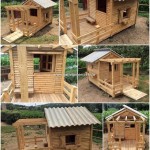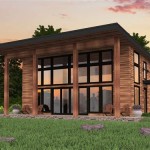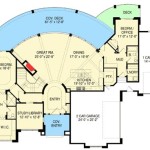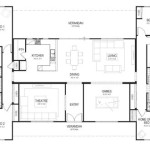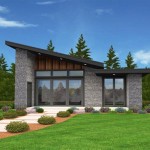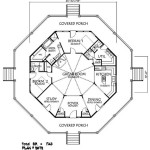Small Four Bedroom House Plans: Maximizing Space and Comfort
The dream of homeownership often includes a specific vision: a comfortable, functional space that caters to the needs of a growing family. For many, this vision translates to a four-bedroom house. However, budgetary constraints and land scarcity often necessitate considering smaller footprints. Small four-bedroom house plans present a design challenge – harmonizing ample living space with efficient use of available square footage. Successful designs prioritize functionality, thoughtful layout, and space-saving strategies to create a comfortable and livable environment.
This article explores the various aspects of small four-bedroom house plans, detailing the considerations involved in optimizing space and ensuring a comfortable living experience. It will delve into key design principles, space-saving techniques, and practical layout solutions that contribute to creating a functional and aesthetically pleasing home, despite its smaller size.
Key Considerations for Small Four Bedroom House Plans
Designing a small four-bedroom house requires careful planning and prioritization. Several key considerations influence the overall success of the design, impacting functionality, comfort, and liveability. Understanding these factors is crucial for making informed decisions throughout the design process.
Firstly, the target occupants and their specific needs are paramount. A family with young children will have different requirements than a family with teenagers or a multi-generational household. The number of bathrooms, the need for a dedicated playroom or study area, and accessibility considerations all depend on the occupants' demographics and lifestyle. A thorough needs assessment is the first step in creating a functional and personalized design.
Secondly, local building codes and zoning regulations significantly impact the design. Setback requirements, height restrictions, and minimum lot size stipulations directly influence the footprint and overall form of the house. Adherence to these regulations is non-negotiable and must be integrated into the design from the outset. Researching and understanding these regulations are vital to avoid costly redesigns and delays later in the construction process.
Thirdly, budget constraints play a critical role in shaping the design and material selection. The cost per square foot significantly impacts the overall affordability of the house. Smart design choices, such as minimizing complex architectural features, utilizing cost-effective materials, and simplifying the roofline, can help control costs without sacrificing functionality or aesthetics. A detailed budget should be established early in the process and closely monitored throughout the design and construction phases.
Finally, the orientation of the house on the lot is crucial for maximizing natural light, ensuring energy efficiency, and optimizing views. Strategically positioning windows and doors can capitalize on sunlight exposure, reducing the need for artificial lighting and heating. Proper orientation can also minimize heat gain in the summer and maximize solar gain in the winter, contributing to energy savings and improved thermal comfort. Analyzing the site conditions and incorporating passive solar design principles are essential for creating a sustainable and energy-efficient home.
Space-Saving Strategies in Small House Design
In the realm of small house design, maximizing every square inch of available space is paramount. Employing clever space-saving strategies can transform a potentially cramped environment into a comfortable and functional living space. These strategies encompass various aspects of design, from layout optimization to furniture selection.
One of the most effective strategies is open-plan living. Combining the living room, dining area, and kitchen into one contiguous space eliminates the need for dividing walls, creating a sense of spaciousness and promoting social interaction. Thoughtful zoning within the open plan, using furniture placement, area rugs, and subtle changes in floor levels, can define distinct functional areas without sacrificing the overall feeling of openness.
Vertical space is another valuable resource that is often underutilized. High ceilings can create a more airy and spacious feel. Utilizing vertical storage solutions, such as floor-to-ceiling bookshelves, built-in cabinets, and lofted beds, can maximize storage capacity without占用 valuable floor space. Wall-mounted shelves and cabinets are particularly effective in smaller rooms, keeping items off the floor and creating a cleaner, more organized appearance.
Multifunctional furniture is essential for small homes. Sofa beds, coffee tables with storage compartments, and dining tables with drop-leaf extensions provide flexible solutions that can adapt to different needs. Investing in high-quality, well-designed multifunctional furniture can significantly enhance functionality and minimize clutter.
Built-in storage solutions are another key element of space-saving design. Custom-designed cabinets, drawers, and shelving units can be tailored to specific needs and seamlessly integrated into the architecture of the house. Built-in storage maximizes space utilization and creates a clean, uncluttered look. Under-stair storage, window seats with storage compartments, and integrated closets are all examples of effective built-in storage solutions.
Finally, minimizing hallways and circulation space is crucial. Long, narrow hallways consume valuable square footage without adding functional living space. Optimizing the layout to minimize hallway length and width can free up space for more usable areas. A well-designed open plan can often eliminate the need for traditional hallways altogether.
Layout Considerations for Four Bedrooms in a Small Footprint
Effectively arranging four bedrooms within a limited footprint requires careful consideration of the layout. The goal is to create a floor plan that provides privacy, functionality, and comfortable living spaces for all occupants. Several layout strategies can be employed to achieve this balance.
One popular approach is to locate the master bedroom separate from the other bedrooms, creating a more private retreat for the homeowners. This separation can be achieved by placing the master bedroom at one end of the house and the remaining bedrooms at the opposite end, or by positioning the master bedroom on a different floor than the other bedrooms. Incorporating a master ensuite bathroom adds convenience and privacy.
Clustering the remaining three bedrooms together in a separate wing or zone of the house is another common strategy. This can be particularly effective for families with children, as it creates a designated area for sleep and play. A shared bathroom serving these bedrooms can be designed with multiple sinks and separate shower/toilet areas to accommodate simultaneous use.
Bunk rooms are a space-saving solution for families with multiple children. Bunk beds maximize vertical space and free up floor space for other activities. Designing a bunk room with built-in storage and individual reading lights can enhance functionality and comfort. Alternatively, a single larger bedroom can be divided into two smaller rooms using a partition or sliding door, offering flexibility as the children grow.
The placement of the bedrooms in relation to the common living areas is also important. Locating the bedrooms away from noisy areas, such as the living room and kitchen, can help ensure a peaceful sleep environment. Minimizing shared walls between bedrooms and living areas can also reduce noise transmission. Strategically positioning closets and bathrooms as buffers between bedrooms and living areas can further enhance soundproofing.
Finally, consider the flow of traffic throughout the house. The layout should facilitate easy movement between bedrooms, bathrooms, and common areas. Avoid creating bottlenecks or dead-end hallways. Ensure that each bedroom has direct access to a bathroom, either ensuite or shared. A well-designed layout promotes a sense of spaciousness and improves the overall liveability of the house.
Ultimately, designing a small four-bedroom house is a balancing act. It requires careful planning, creative space-saving strategies, and a deep understanding of the occupants' needs and lifestyle. By prioritizing functionality, optimizing layouts, and utilizing innovative design solutions, it is possible to create a comfortable and livable home, even within a compact footprint.

Free Four Bedroom House Plans

Free Four Bedroom House Plans

Free Four Bedroom House Plans

15 Budget Friendly Tiny House Plans For Maximum Comfort

House Design Ideas With Floor Plans Homify

12 Examples Of Floor Plans With Dimensions

15 Budget Friendly Tiny House Plans For Maximum Comfort

15 Budget Friendly Tiny House Plans For Maximum Comfort
4 Small Bedroom Layout Ideas That Maximize Space And Comfort

Tiny Home Floor Plans That Maximize Small Spaces 3d House Planner Blog
Related Posts

